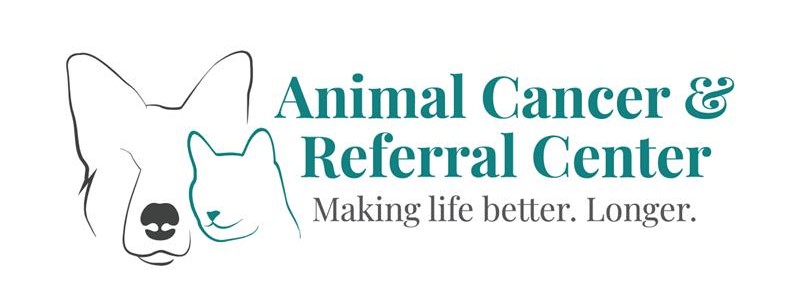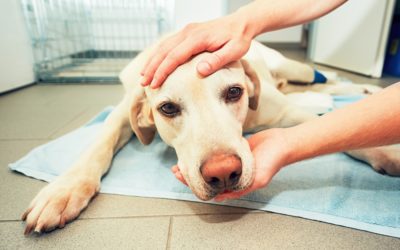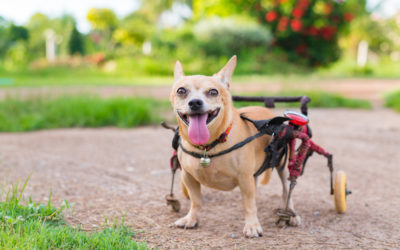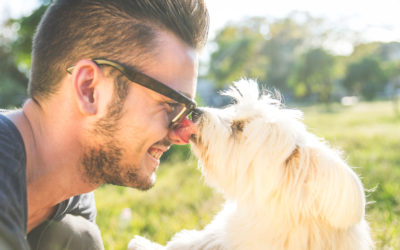4 Reasons Why Regular Veterinary Care is Essential for Your Cat
It’s no secret that more dogs than cats visit their veterinarian for routine preventive care. Most dogs are easier to transport than their feline counterparts, and cats are especially skilled at hiding illness or injury. Since cats often appear healthy, pet owners may let their wellness care slide by for a year or more before wrangling them into their veterinarian’s hospital. The mantra “If it’s not broken, don’t fix it” applies to many things, but not your cat. By investing in your cat’s regular wellness care, you can help them maintain their health and happiness for many years. Here are four reasons why routine wellness care is essential for your cat.
#1: Routine wellness care spots disease in your cat earlier
Cats are both predator and prey, which means they are remarkably talented at masking anything that can be construed as weakness. A slow-growing cancer can develop for months or years before your cat shows any obvious signs, at which point, it is often too late for a good prognosis. By taking your cat for annual or biannual wellness visits, your family veterinarian can spot disease much earlier. A thorough physical exam, screening tests, and a lifestyle evaluation can detect subtle changes in your cat’s health that may indicate an underlying disease process. For example, your family veterinarian may spot a suspicious mass in your cat’s mouth during a routine oral exam after first noticing their unkempt hair coat. Most pet owners do not regularly examine their cat’s mouth, and an oral tumor can grow without them realizing, until their cat has problems eating, or it is bleeding.
#2: Regular preventive care monitors your cat’s health status
Annual or biannual wellness visits closely monitor your cat’s health progression over their lifetime. Honing in on minute changes over the course of months or years can pinpoint the earliest stage of a disease process, allowing your family veterinarian to take prompt action toward staving off a more serious illness or disease progression. As pets age, organ function diminishes, their joints degenerate, and their immune system weakens. However, close monitoring of your cat allows your family veterinarian to prevent conditions that could have kept quietly brewing until they became a significant problem. For example, feline kidney disease typically shows no signs until the condition is well-advanced. Regular blood work doesn’t detect the disease until roughly 75% of the kidneys are damaged, when management of the obvious signs is all that is possible. But, with regular blood work, your family veterinarian can monitor your cat’s kidney values over time, and may recommend a specific kidney function test that can detect disease much sooner, customize a treatment plan, and provide a much better prognosis.
#3: Routine wellness care protects your cat against disease
Regular wellness care protects your cat against a variety of preventable illnesses. Concurrent diseases can weaken an already overburdened immune system if your cat is diagnosed with cancer. An individual vaccination protocol, parasite prevention plan, and proper diet can go a long way toward keeping your cat in optimal health. During your cat’s wellness visit, your family veterinarian will discuss your cat’s lifestyle and suggest changes that will improve their health. Suggestions may include:
- A specialized diet to improve mobility and encourage weight loss
- Increased environmental enrichment to stimulate your pet mentally and ensure they are physically active
- Ongoing preventive care recommendations to ensure good health
#4: Regular preventive care ensures your cat is stronger for cancer treatments
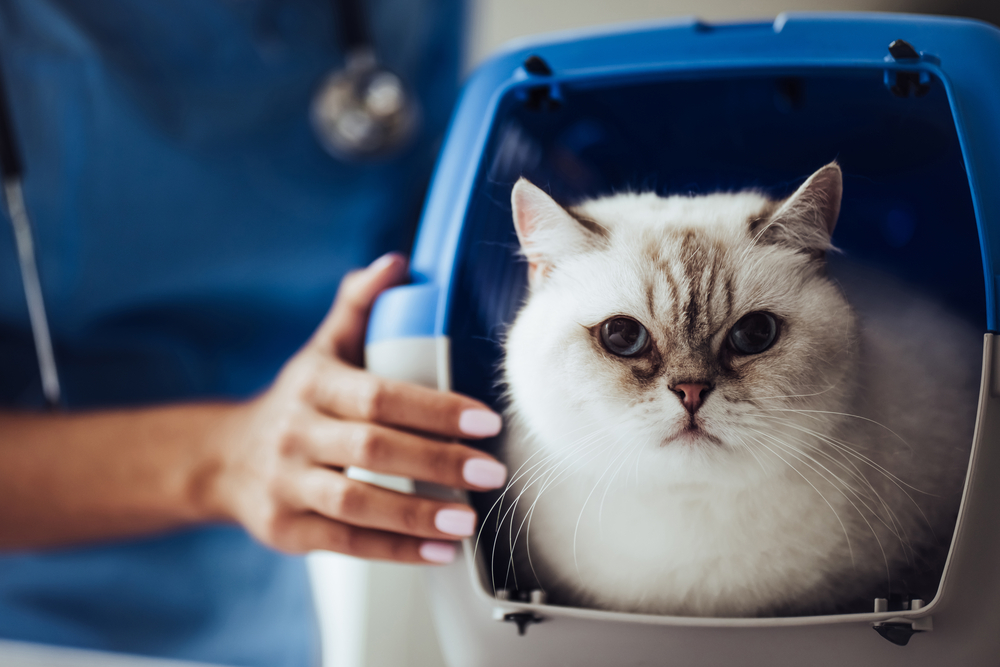
According to the Comparative Oncology Program of the U.S. National Cancer Institute, approximately 6 million new cancer diagnoses are made in both dogs and cats each year. For cats diagnosed with cancer, you want to do everything you can to give them the best shot at a good quality of life, and remission if possible. Keeping your cat healthy in all other aspects through routine wellness care ensures they are stronger for chemotherapy, radiation, and other cancer treatments.
If your family veterinarian spots a suspicious lump or finds a troubling test result during your cat’s wellness visit, your Pearland Animal Cancer and Referral Center team is here for you. On referral to our hospital, we’ll perform a thorough diagnostic workup on your cat that will provide answers from which we can make a diagnosis, formulate a treatment plan, and determine a prognosis. Call us, and we will be there with you on your beloved cat’s cancer journey.
5 Perfect Gifts for Your Pet with Cancer
If your beloved pet has been diagnosed with cancer, you want to spend every moment spoiling them and ensuring their final moments are memorable. The holidays are the best time to celebrate your pet with special gifts, but not all gifts are approved for pets who have cancer, especially if the type or treatment causes nausea, vomiting, or other gastrointestinal issues that can flare up with rich treats. This doesn’t mean you can’t lavish them with fabulous gifts designed to keep them warm, comfortable, and happy. Check out our five perfect gifts for pets with cancer.
#1: A heated bed to keep your pet warm all winter
Pets with immune disorders—especially cancer—struggle with thermoregulation and maintaining their body temperature. Gifting your pet a heated bed that is perfect for cozy cat or dog naps will keep them warm all winter.
K&H has created the ideal collection of heated beds for dogs, cats, and any pets who have poor mobility. Their beds are designed for 24/7 use, with most heating up to a standard pet body temperature, rather than becoming too hot. For pets with mobility issues who need to stay warm, but cannot move off a heated bed on their own, K&H has also designed a bed with an adjustable thermostat to keep them at the ideal temperature. With a comfortable heated bed, your furry pal will have no problems staying toasty warm all winter long.
#2: An advent calendar with easy-to-digest treats for your pet
While your pet may have a sensitive stomach after developing cancer and undergoing treatment, you can still spoil them with tasty treats, but you must choose treats that are easy to digest. Purchase an adorable pet advent calendar that you can stock with treats that are gentle on your pet’s stomach, rather than the typical commercial products laden with sugar, fat, food coloring, and preservatives. Search for treats that are labeled for sensitive stomachs, or cook your own with one of these recipes. If you’re struggling to find treats that your pet can easily digest, discuss options with your family veterinarian or our Pearland Animal Cancer and Referral Center team.
#3: That young-at-heart feeling for your pet
Although your pet may be struggling with mobility problems or a painful cancer process, encouraging activity is beneficial for their physical and mental health. A wide variety of interactive toys are available, and you can choose one based on your pet’s preferences. For example, simple dog bones have been upgraded to the interactive toy from Wickedbone, which is programmed to attract your dog’s attention. You can choose between an interactive auto-play mode or controlling the bone with an app-based joystick, which also responds to various types of touch, such as chasing, teasing, or avoiding.
Cats will enjoy a robotic feather wand that winds throughout your home, instigating a game of stalk and pounce. You can enter a sleep mode after 10 minutes of play so your cat won’t be worn out to the point of exhaustion, and their interest will continuously be piqued.
When first offering an interactive toy to your pet, ensure you are home to monitor their play and comfort level. Once you’re satisfied that your pet plays well, you can set the new toy to auto-play for a fun activity when you’re away from home.
#4: A winter wardrobe to keep your pet warm and safe
Despite chilly temperatures, your dog still needs to head outdoors to take care of business. Keep them safe and warm with cold-weather gear that wards off wet fur, a dropping body temperature, and slipping on ice. Check out these waterproof dog booties with an anti-slip sole that will not only help your pet grip slippery surfaces, but also protect them from chemicals, like spilled antifreeze and sidewalk salt. Another great item is a waterproof jacket to protect your pet from melting snow and freezing rain. With proper winter gear, your pet is ready to brave the elements.
#5: Check off an activity on your pet’s bucket list

Sometimes, the best gifts are those that aren’t wrapped, such as the joy of simply spending time together. If you’re struggling to find the perfect gift for your beloved pet this holiday season, look at their bucket list and check off a fun activity, like cutting down a Christmas tree, driving through a light show, or curling up on the couch to watch Rudolph for the hundredth time. No matter the activity, your pet will be delighted with the extra attention during the chaotic holiday season.
Our Pearland Animal Cancer and Referral Center team wishes you and your family—two- and four-legged members—a happy and safe holiday. Remember, we are always here for your pet as you navigate their cancer diagnosis and treatment plan—call us.
5 Holiday Safety Tips for Your Pet With Cancer
#1: Keep your pet’s paws off toxic foods
While spoiling your pet with a Thanksgiving feast is tempting, they may already be nauseous from their cancer or other disease process, or in rare cases, their medications. Many dishes that grace your Thanksgiving spread contain ingredients toxic to pets, or they may be found in your kitchen as you perform prep work. Avoid sharing the following Thanksgiving tidbits with your furry companion:
- Unbaked bread dough — Helping hands are always wonderful in the kitchen, but helping paws—not so much. If your pet eats unbaked bread dough, the fermenting yeast releases gases that will bloat their stomach, which may lead to a life-threatening situation called gastric dilatation volvulus (GDV). In addition to bloat, alcohol from the yeast can enter your pet’s bloodstream and cause alcohol poisoning.
- Chocolate and desserts — The dessert table is always a big holiday hit, but chocolate and xylitol, the popular sugar substitute, should be paws-off for your pet. Theobromine toxicity from dark, rich chocolate can cause vomiting, diarrhea, hyperactivity, and seizures, while xylitol toxicity can cause liver failure and a fatal drop in blood sugar.
- Onions, garlic, and chives — Spicing up your side dishes with onions, garlic, and chives may tantalize your taste buds, but only a small amount can destroy your pet’s red blood cells, causing potentially fatal anemia.
- Turkey bones, skin, or fat — Everybody wants a piece of the Thanksgiving turkey. Your pet may be willing to take the scraps, but the skin is high in fat, and cooked bones are prone to splintering and piercing the gums, stomach, or intestines.
- Butter, fat, and gravy — High-fat foods are a nightmare for your pet’s pancreas. Because they cannot metabolise fat as well as people, cats and dogs can experience crippling abdominal pain after ingesting buttery mashed potatoes dripping with rich gravy. If not caught quickly enough, pancreatitis can be fatal.
If your furry companion’s appetite isn’t up to snuff because of their cancer treatment and you’d like to spoil them with a treat, tempt them with a chunk of skinless, boneless chicken breast, or plain, mashed, dairy- and fat-free potatoes.
#2: Block your pet’s access to holiday decorations
If your pet is undergoing chemotherapy or radiation therapy, they also may not feel as frisky as usual, but they can still get into mischief with holiday decorations. A few of the more common decoration disasters include:
- Lights and candles
- Christmas tree needles and additive-filled water
- Glass ornaments
- Centerpieces and decor made from flowers, plants, gourds, and cornstalks
- Tinsel and garland
- Wrapping paper and ribbon
Keep in mind that your pet may not feel their best and is unlikely to enjoy being “decorated,” so let them celebrate the holidays in their birthday suit rather than making them wear an uncomfortable costume.
#3: Ensure your pet remains warm, dry, and comfortable during the holidays
Although a Texas snowfall is unlikely in our Pearland neck of the woods, freezing rain can happen on occasion. When heading outdoors during the winter holidays, keep a close eye on your senior pet’s comfort level. Older pets, especially those with debilitating conditions like cancer, are much less capable of thermoregulation and can quickly become chilled, stiff, and achy, despite relatively mild conditions. Rain and wind gusts can further suck the heat from your pet, so bundle up when outdoors. When you return inside, dry your pet thoroughly, and provide a warm resting place for them to recover from brisk winds and rainfall.
#4: Create a quiet haven for your pet during holiday celebrations

Does all the holiday celebration commotion overwhelm you on occasion? Your pet may feel the same, especially if they are painful, nauseous, or otherwise uncomfortable from their medical condition. When the festivities become too much for your pet, ensure they have a safe, quiet retreat, and enforce that the area is off-limits to guests. Deck out your pet’s haven with a cozy bed, fleece blanket, calming music, pheromone therapy, and a Kong stuffed with their favorite treats, and they’ll likely enjoy their party for one much more than the general chaos.
#5: Stock up on pet medication refills before the holidays
Most businesses are closed on major holidays, including veterinary hospitals, so call in your pet’s medication refills well in advance. Take into account your family veterinarian and our hospital’s hours of operation, along with potential shipping issues of less-common chemotherapeutic agents and other medications. Also, know the location of the nearest emergency hospital should your sick pet need help when we are closed.
As the holidays approach, the Pearland Animal Cancer and Referral Center team wishes you and your pet a happy holiday season. We understand the holidays can be a difficult time when your pet has cancer, but our team is always here for you and your cherished companion—give us a call.
7 Enrichment Ideas for Your Pet Undergoing Cancer Treatment
If your furry pal is undergoing cancer treatment, whether chemotherapy, radiation therapy, or a combination of treatment modalities, they’re likely not feeling their best. Perk up your pet’s zest for life again with engaging enrichment activities, while keeping a close eye on how they are feeling. Depending on their cancer type and treatment form, they may feel nauseous, weak, or otherwise uncomfortable, so always monitor your pet, and call it quits if a certain activity becomes too much to handle. Above all, we want you and your pet to experience the best quality of life possible, rather than packing in so many adventures that your pet is miserable. However, playing and interacting with your furry companion can help boost their mood and make them feel like their old self. Try the following seven enrichment ideas to engage your pet in delightful diversions.
#1: Create a bucket list for your pet
Although commonly considered a list made solely for rapidly declining pets with a terminal illness, a bucket list of favorite activities can be good for pets with treatable cancers or who may enter remission. You may be tempted to include new, exciting adventures on their list, but keep in mind that your furry pal may be weary or uncomfortable and may not appreciate new activities. Instead, stick to tried-and-true favorites, like a trip through a Starbucks drive-thru for a puppacino. If your pal enjoys socializing and investigating new sights and smells, try this bucket list for Houston dogs—remembering to closely monitor your pooch’s energy and comfort levels.
#2: Use puzzle feeders instead of a food dish
If your best friend does little more than eat and lounge on the couch with you, invigorate their mental health with a variety of puzzle food toys. Eating from a food dish is boring, and many pets enjoy a food puzzle challenge. For pets on a canned-food diet, or those who enjoy peanut butter, yogurt, or tuna treats, try a LickiMat. These wet food items can also be mixed with dry kibble and stuffed into a rubber Kong for a long-lasting meal, or you can fill a Kong Wobbler with plain kibble for a fun toy your pet can chase and roll around.
#3: Play scent games with your pet
Dogs rely heavily on scent, and although cats are less in-tune with their nose, both can enjoy scent games or nose work. Sniffing has been shown to reduce a dog’s heart rate and promote relaxation, which is ideal for pets undergoing cancer treatment. Invest in a long leash—not a retractable leash, as those put pressure on your dog’s neck—and explore the nearest park or hiking trail. At home, hide tasty treats around a room for your pet to sniff and seek.
#4: Include your pet in family activities
Pets want nothing more than to spend time with their families, unless they are feeling ill from their cancer type or treatment. They likely still want to be included in the general family hubbub, and would enjoy a cozy bed placed in a corner of the room where they can be with their favorite people. When possible, include your pet in your family outings, such as picnics, hikes, and long car rides, but only if they enjoy such activities.
#5: Choose novel ways to be active with your pet
After your pet has been diagnosed with cancer, or is undergoing treatment, you may want to care for them as if they were made of glass, snuggling up on the couch instead of your usual activities. Although your four-legged friend may feel slightly under the weather, daily exercise is a must for mental and physical health. When hiking, jogging, or playing with your pet, let them set the pace, keeping a close eye on their energy and comfort level.
#6: Teach your pet new tricks
You can teach an old dog—and cat—new tricks. Arm yourself with tasty treats and a clear idea of what you’d like to teach your pet, and you can shape or capture new behaviors. Trick training is an excellent way to keep your pet’s mind sharp and further strengthen your bond.
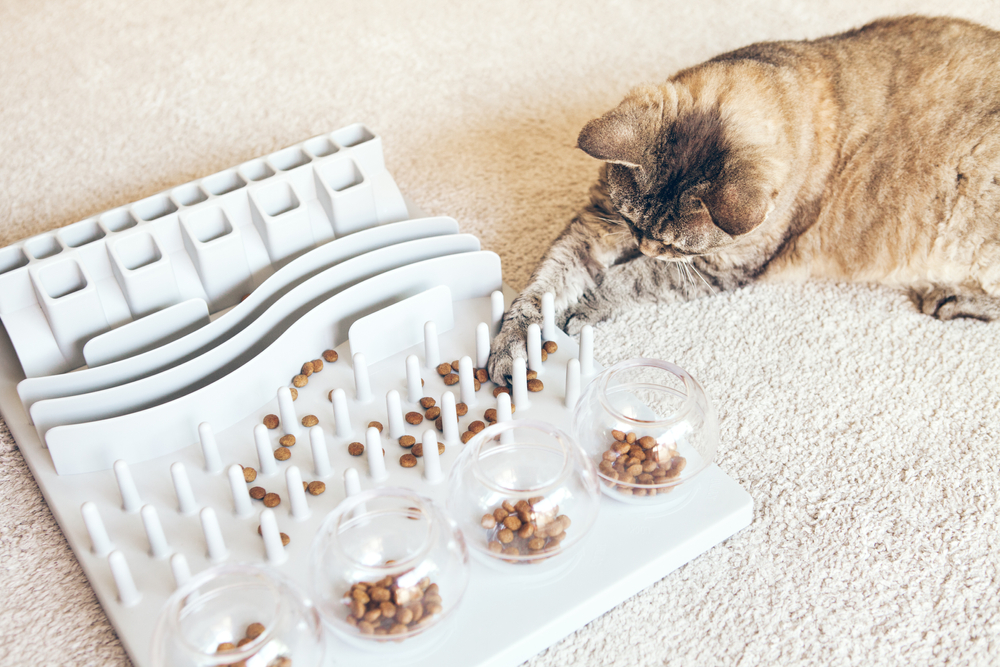
#7: Invest in interactive toys for your pet
Despite never wishing to leave your pet’s side after a cancer diagnosis, they will have to be home alone on occasion. Let your pal have some fun with a new interactive toy. Great options include robotic mice for cats, a ball launcher for dogs, or an automatic treat dispenser paired with a camera for both.
Your pet may be undergoing cancer treatment, but you can still find activities they will enjoy. However, if they seem to be struggling with pain, nausea, or general weakness, contact your Pearland Animal Cancer and Referral Center team for assistance.
MythBusters: Veterinary Chemotherapy Edition
Cancer is a scary concept, whether a two- or four-legged family member is affected. When a furry loved one is diagnosed with cancer, many pet owners try to relate the potential treatment to their knowledge of human cancer treatments. But, comparing veterinary chemotherapy to human chemotherapy has resulted in many myths that still remain today, despite incredible oncology advancements. To dispel these falsehoods, we’re tackling five frequently encountered veterinary chemotherapy myths.
Myth #1: My pet will lose all their fur while undergoing chemotherapy
Truth: While certain dog breeds, and some cats, experience fur loss during chemotherapy, it is relatively uncommon. Non-shedding dog breeds like poodles are more prone to losing their fur, but their hair will usually regrow after chemotherapy has ended. However, pets receiving chemotherapy can lose their guard hairs and whiskers, their skin and fur may change color, and fur regrowth after shaving for an intravenous (IV) catheter can be slow.
Myth #2: Chemotherapy drugs will create horrible side effects in my pet
Truth: When owners are presented with their pet’s chemotherapy treatment plan, they often fear horrible, debilitating side effects, like those seen in people. However, veterinary chemotherapy differs greatly from human chemotherapy. Because pet chemotherapy doses are significantly lower than human doses, and generally more spread out, veterinary chemotherapy typically causes few, or only mild, side effects. Chemotherapy targets rapidly dividing cells, such as cancer cells, and can also affect the rapidly dividing cells in the gastrointestinal tract and bone marrow, yet the overall toxicity rate is low in veterinary chemotherapy patients, with approximately 80% having no side effects, and only 15% to 20% experiencing mild to moderate side effects that last a few days. Side effects are less common in cats than dogs.
Serious complications, such as severe inappetence, dehydration, vomiting, and diarrhea, occur in less than 5% of veterinary chemotherapy patients. With a dose reduction and prophylactic medications, most of these patients can successfully receive that same drug again.
Myth #3: Chemotherapy is only administered intravenously
Truth: During your pet’s chemotherapy treatment, we will schedule routine follow-up appointments to check their health and treatment response, which may include blood work, X-rays, ultrasound, and additional diagnostic testing. While your furry pal will need to visit Pearland Animal Cancer and Referral Center for medical progress appointments, you may not need to visit for your pet’s chemotherapy treatment. Chemotherapy is commonly administered intravenously, but alternatives, such as subcutaneous, intramuscular, or oral options, are also available. If your pet’s chemotherapy treatment comes in an oral form, you can administer the treatment at home, with regular follow-up visits to monitor progress. However, you must carefully follow all instructions, such as administration frequency, administration with or without food, and whether other medications are contraindicated with the chemotherapy agent. In addition, you must never open or crush the chemotherapy pills or tablets, always wear Latex gloves when handling the pills, and always wash your hands thoroughly after handling any chemotherapy agent.
Myth #4: Chemotherapy for my pet is too expensive
Truth: While it’s true that cancer treatment and other advanced veterinary care can be expensive, chemotherapy, and other treatment options, can be reasonable. Our team is dedicated to finding financially acceptable treatment options for your family, and we will carefully outline the costs of diagnosis, treatment, and ongoing follow-up care, to help you choose a financially feasible option. Additionally, clinical research trials and angel funds may help offset the costs for qualifying patients.
Myth #5: Chemotherapy is the only cancer treatment available for pets
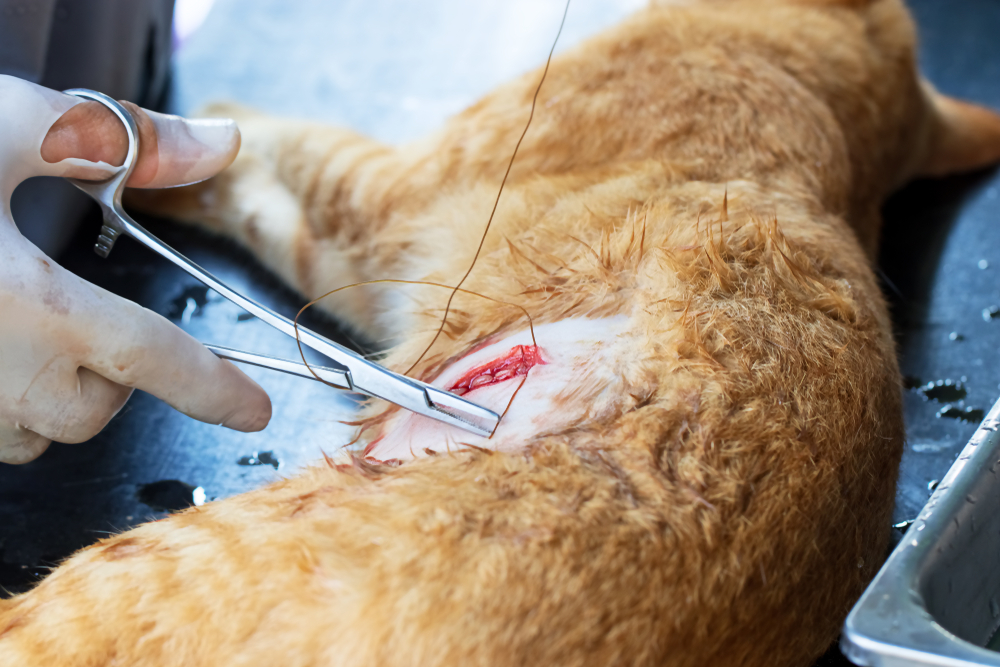
Truth: Although your mind may go straight to chemotherapy as the only cancer-treatment option for your pet, numerous other treatment methods are available. After your pet’s diagnosis, Dr. Parsons-Doherty will create a treatment plan designed to grant a good quality of life as long as possible for your cherished companion. Often, this plan will incorporate multiple modalities; for example, a tumor may be surgically excised, followed by chemotherapy or radiation therapy, to destroy any lingering cancer cells. Many factors determine your pet’s treatment protocol, and chemotherapy alone may not grant the best possible prognosis. New cancer treatments are available, with many more on the horizon, and a combination of these new treatments may be an excellent option for your pet.
When you have questions regarding your beloved companion’s chemotherapy, or other cancer-treatment options, avoid listening to myths and misconceptions. Instead, turn to your trusted Pearland Animal Cancer and Referral Center team for advice and support. We’re always here for you and your furry loved one—call us.
Is Your Pet’s Lump Cause for Concern? Signs of 5 Common Cancers in Pets
A cancer diagnosis is never easy, but the dedicated team at Pearland Animal Cancer and Referral Center is devoted to ensuring your beloved companion has the best prognosis possible, with the most advanced diagnostic tools and treatment available. Although we see a wide range of cancers in pets, here are five that most commonly affect our furry family members.
#1: Osteosarcoma
Osteosarcoma is the most common bone cancer in dogs, with a higher prevalence in large- and giant-breed dogs such as Irish wolfhounds and Great Danes, but is less common in cats. Osteosarcoma typically occurs in the long bones, such as the ribs or the leg bones, although any bone in the body can be affected. This cancer generally spreads rapidly, metastasizing to the lungs, lymph nodes, and other bones, and has a poor prognosis, despite our gold-standard treatment. If a limb is affected, amputation is recommended, along with chemotherapy to treat metastases. Unfortunately, by the time a pet owner notices osteosarcoma signs, which include swelling, pain, and lameness in the affected limb, microscopic metastases have likely spread throughout the body, making this dual treatment protocol a necessity. Sadly, fewer than 10% of dogs who undergo this two-pronged treatment live longer than three years.
#2: Squamous cell carcinoma
Squamous cells, which line the outer layer of the skin and internal organs, can turn cancerous when damaged, such as through UV light exposure or tobacco smoke. Two forms of squamous cell carcinoma can affect pets—oral and skin (i.e., cutaneous). The oral form is locally aggressive, grows rapidly, and frequently invades the jawbone, leading to a poor prognosis. The cutaneous form rarely spreads beyond the original tumor site, but can travel to local lymph nodes and the lungs, and may reoccur in the same area after surgical removal.
Oral squamous cell carcinoma signs include:
- Bad breath
- Difficulty eating
- Excessive drooling
- Bleeding from the mouth
- Pain
- Loose teeth
- Ulcerated gums
Cutaneous squamous cell carcinoma typically affects white or light-colored pets who have the least amount of protection from harmful UV rays, and in cats, generally appears as reddened lesions on the ear tips, around the eyes, and on the temples. In dogs, squamous cell carcinoma tends to attack the nail beds. Both cancer forms are more common in cats than dogs, particularly in middle-aged to older cats.
#3: Lymphoma
Lymphoma is one of the most common cancers found in pets, and can take a variety of forms. This cancer originates in the lymphocytes, a type of white blood cell responsible for the body’s defenses, and can spread to attack the lymph nodes, organs, bone marrow, and any body part. Lymphoma is most common in middle-aged to older pets, but can sometimes affect young pets. Cats who have been diagnosed with feline leukemia or feline immunodeficiency virus have an increased risk of developing lymphoma, while canine breeds, such as golden retrievers, boxers, Saint Bernards, Airedale terriers, Scottish terriers, and basset hounds appear the most affected.
Lymphoma signs depend on the body area affected, and can include:
- Swollen lymph nodes
- Vomiting
- Diarrhea
- Weight loss
- Coughing
- Shortness of breath
- Loss of appetite
- Constipation
- Black, tarry stool
Some lymphoma forms respond well to treatment, and may go into remission, but many pets who continue to suffer from lymphoma can experience a good quality of life for some time while undergoing treatment.
#4: Mast cell tumor
Mast cell tumors arise from a type of blood cell associated with allergic responses, and generally form on the skin, although they can pop up in the bone marrow, spleen, liver, and intestinal tract. These tumors can range in severity from low-grade, less aggressive masses, to high-grade, metastatic tumors. Low-grade tumors that are surgically removed with wide margins have the best prognosis for complete recovery.
Mast cell tumors vary in appearance, and may be a raised lump under the skin, or become red, ulcerated, or swollen. They can remain stagnant for months, or may appear suddenly, and grow quickly. They may also fluctuate in size daily. Boxers, bulldogs, and Siamese cats are most at risk for mast cell tumor development.
#5: Mammary gland carcinoma
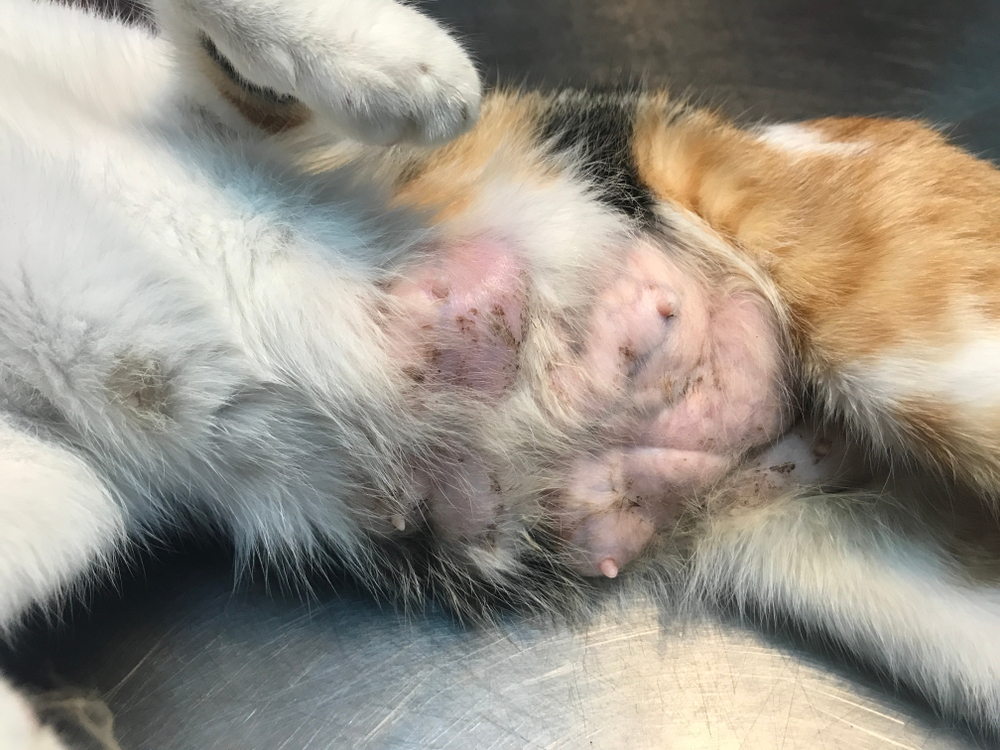
Mammary gland carcinomas are the most common tumors in unspayed female cats and dogs, and may go unnoticed for long periods. The lumps begin as a small nodule around the nipple or in the mammary chain, but can grow to large, painful, ulcerated tumors. In dogs, 50% of these tumors will be malignant, and 50% of malignant tumors will be fatal. Sadly, malignant mammary tumors in cats are 90% fatal. Spaying your pet before her first heat cycle greatly reduces her risk for mammary cancer development.
Pets are like people, and can fall victim to many cancer forms. If you notice unusual lumps, or changes in appetite, activity, or behavior, contact your family veterinarian for a thorough physical exam and diagnostic testing.
If your beloved pet does receive a cancer diagnosis, our Pearland Animal Cancer and Referral Center team is ready to help you through such a challenging time. A referral from your family veterinarian to a veterinary oncologist will grant your furry family member the best prognosis, and the most advanced treatment. Call us to discuss how we can help care for your cherished companion after their cancer diagnosis.
4 Summer Safety Tips for Pets with Cancer
If summer is your favorite time of year, you likely want to enjoy many activities with your beloved companion, although if your pet has cancer, they may not be able to participate in as many events as you’d like. However, despite their terminal illness, your furry pal can still have a great time during summer, provided you take proper precautions to keep them safe, cool, and comfortable. Before heading out to soak in the summer sun, check out our four tips that will help your furry friend enjoy the season safely, despite their condition, or help them to avoid pet cancers.
#1: Use pet-friendly sunscreen for cats and dogs
Like people, pets can be affected by skin cancer. Although your pet’s fur coat acts as armor against the sun’s harmful ultraviolet rays, white, light-colored, and thin-coated pets are at a higher risk of developing skin cancer. The UV rays from prolonged sun exposure, whether outdoors or sunbathing in a window, can cause skin damage, sunburn, and increased risk of common skin cancers.
If your yard lacks shade, or your white kitty enjoys lying in the windowsill all day, soaking up the rays, consider applying pet-friendly sunscreen to protect them against sun damage. Do not apply sunscreen formulated for people, which can contain ingredients toxic to pets, such as zinc oxide.
If your pet enjoys the warm sunshine’s soothing rays, they should be monitored closely for signs of skin cancer, especially if they are light-colored. Common skin cancer types include melanoma and squamous cell carcinoma. Skin cancer signs can range from lumps and bumps on your pet’s body, to small, round masses around the mouth, nose, toes, or paws, that can be black, brown, or pink. Any new mass—no matter how small—should be examined by your veterinarian or by a veterinary oncologist at Pearland Animal Cancer and Referral Center. If a bump changes shape, grows rapidly, or is accompanied by a non-healing sore, contact us for an appointment. We’ll take a sample to determine the mass type, and the best treatment course.
#2: Monitor your pet’s breathing when outdoors
When romping outdoors with your furry pal, be cautious of overdoing it, especially when temperature and humidity levels rise. Excessive heat, paired with high humidity, can make it challenging for your best friend to breathe well, especially if their cancer has metastasized to their lungs. These small masses can restrict proper lung function, and sticky weather makes breathing more difficult than usual. For pets with flat faces (i.e., brachycephalic breeds), choose the coolest part of the day to exercise and play outdoors. Early morning is usually best for pets with breathing issues, regardless of the cause, as the temperature and humidity are at their lowest points. When outdoors, monitor your pet closely for an increased respiration rate or effort, and at the first sign of trouble, head inside, where it’s cool and comfortable.
#3: Ensure your pet stays hydrated during the summer
Adequate hydration is critical in the summer to avoid heat exhaustion, or a potentially fatal heatstroke episode. However, if your beloved companion has an inoperable oral or nasal tumor, drinking and breathing may be difficult. Your pet’s mass may have been removed or debulked through surgery, but part of their jaw or tongue may be absent, making drinking more challenging. Encourage your pet to drink with drinking fountains, ice chips, or water flavored with a small amount of sodium-free chicken broth, and always provide fresh, cool water. Feeding your pet canned food with a high moisture content, or adding water to canned food to make a slurry or soup that your furry pal can lap up more easily, are also excellent ways to increase moisture intake.
#4: Avoid feeding your pet foods from your cookout
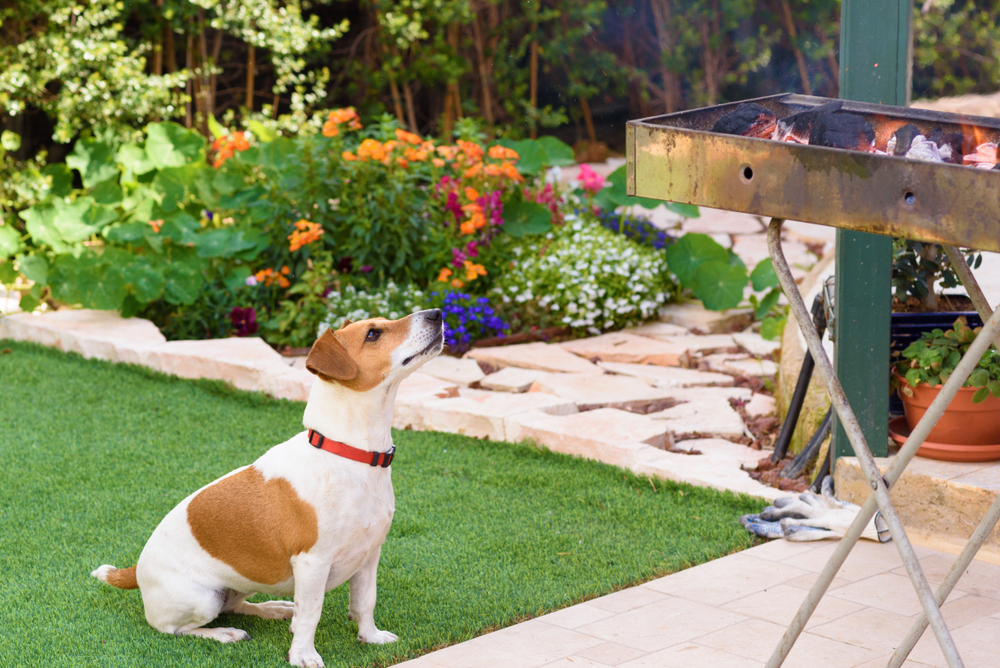
One of the summer season’s highlights is cooking everything on the grill, whether it’s meat, a vegetable, or fruit. The mouth-watering aromas when you’re grilling a thick, juicy steak will likely tempt your furry pal, but avoid sharing your barbecue dinner. Bones in ribs, steak, and chicken can pierce your pet’s intestinal tract, or lodge and cause a life-threatening obstruction, while fatty meats may lead to pancreatitis. If your best friend is already battling illness, prevent compounding the issue, and offer them only pet-friendly foods. Fresh veggies, small pieces of fruit, and chunks of lean meat can be more easily and safely digested than corn on the cob, or potato salad. Keep in mind that some cancer treatments may reduce your pet’s appetite, or make them nauseous, so tempting them with small portions of healthy human foods may encourage them to eat. However, don’t overdo it, as unfamiliar foods may cause vomiting or diarrhea. When in doubt about which foods are safe for your pet, call us for advice.
If your furry pal develops an unusual lump, bump, or non-healing sore after excessive sun exposure, contact us for an appointment, to determine the source of the issue.
7 Ways to Memorialize Your Beloved Pet
Losing a pet is heartbreaking, whether or not you’ve had time to prepare for an eventual loss after a cancer diagnosis. You’ve cherished your beloved companion for years, and while their memory will always be in your heart, your mind may begin to forget the details of your bond. To ensure your best friend will have their permanent special spot in your heart and your mind, you may want a unique way to commemorate their memory.
After your furry loved one receives a terminal cancer diagnosis, your thoughts likely automatically turn to aftercare, such as burying your pet at home, or cremating them. This decision will have bearing on your memorialization options. Depending on your pet’s cancer, you may not have much time to decide, or you may have months. Discuss with your family the following ways to remember your beloved companion, and which would mean the most to you.
#1: Engrave a stone to mark your pet’s grave
If you choose to bury your pet, or their ashes if cremated, you can create a gorgeous burial area where you can sit, and feel close to your furry loved one. A traditional headstone or grave marker, engraved with your pet’s nickname, a special saying, and a picture will make a perfectly unique memorial. There are many heartfelt sayings about the impact pets have on our lives that you may consider, or create your own special phrase that reminds you of your bond with your pet. Once the stone is placed, plant bright blooms around your pet’s gravesite, or create a memorial garden.
#2: Personalize an urn for your pet’s ashes
If you choose to have your pet cremated, a personalized urn can commemorate your beloved companion’s final resting place. A wide variety of urns—wooden, stone, or metal—are available. You can have an urn cast in your pet’s image, and engraved with a favorite picture, or opt for a simple, elegant look without added frills. Whatever you choose, your furry loved one’s urn will be a wonderful commemoration of your life together.
#3: Create a paw print of your pet
Paw prints are beautiful works of art that will remind you of your best friend. You can create your own clay paw print at home with a mold kit or, at Pearland Animal Cancer and Referral Center, we can design a copy of your pet’s paw after euthanasia, which allows us to redo the print if necessary, to ensure it looks perfect.
#4: Commission a painting of your pet
A painting is a beautiful way to commemorate your pet. Choose your favorite picture of your best friend, then search for an artist whose style you like. Some people prefer simple, clean drawings, while others like a splashy watercolor to depict their pet. The art style that matches your pet’s personality is an excellent memorial to their life.
#5: Make a donation to an animal shelter in your pet’s name
What better way to celebrate your pet’s life than by saving another’s? If you rescued your furry pal from an animal shelter, donate toys, food, bedding, or other needed items to that shelter. You can also donate to a shelter, rescue, or “angel fund” organization dedicated to helping alleviate cancer treatment costs for pets, in your pet’s name.
#6: Create a piece of jewelry from your pet’s ashes or fur
If your pet is cremated, you can commission a beautiful piece of jewelry containing your beloved companion’s ashes or fur. You can have a ring or necklace created, so you can always have a piece of your pet with you. A small sculpture with your pet’s ashes or fur is another wonderful way to commemorate your pet.
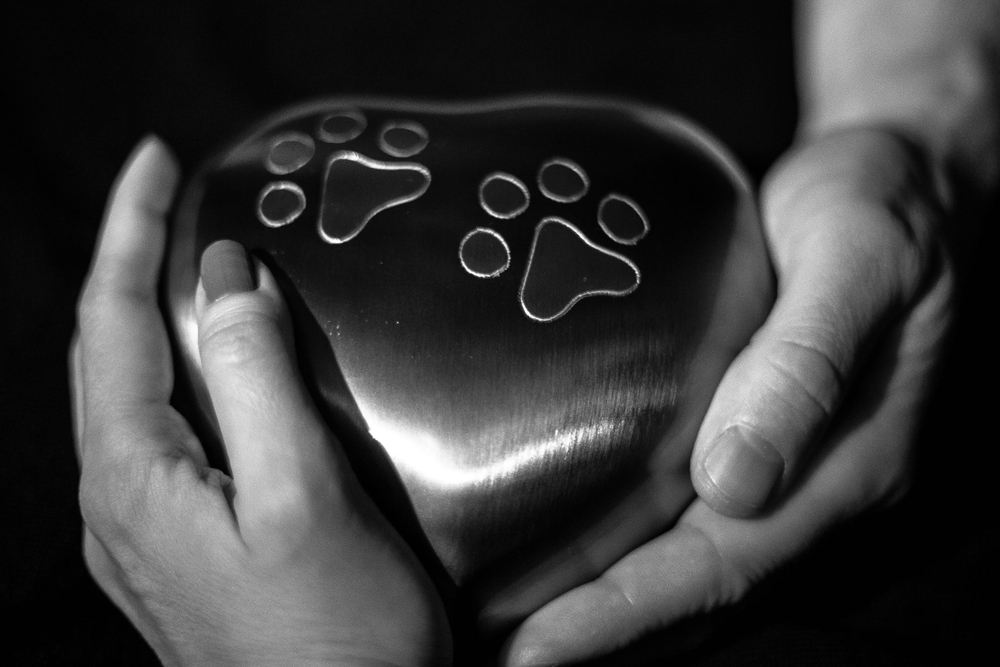
#7: Design a tattoo to commemorate your pet
While tattoos are not for everyone, they clearly show that your beloved companion was special. Think carefully about the design you would like, and whether you’d prefer a paw print, nose print, simple outline, or highly detailed picture of your best friend.
If you’re struggling with the thought of saying good-bye to your beloved companion after a cancer diagnosis, talk to the Pearland Animal Cancer and Referral Center team. We know how incredibly difficult it is to care for a pet with cancer, and we want to help.
Special Care for Special Pets: How to Care for a Disabled Pet
Having another living creature rely solely on you for all her needs is a big responsibility, and a disabled pet can be a big challenge. Paired with managing cancer treatment, a missing limb, blindness, or deafness can prove a difficult burden for you and your pet to handle. But, a pet with a disability has as much love to share as one who has four legs, and can still return your adoring gaze. To help return your three-legged, deaf, or blind pal’s devotion, we’ve outlined a few ways to make caring for your special pet easier.
How to care for a pet with an amputated limb
Many pet owners cannot fathom their pet with only three legs, but almost all pets do as well with three legs as they do with four. There’s an adjustment phase after the amputation surgery, but pets don’t realize they’re missing a leg, and usually cope well. We often recommend limb amputation for cancers that attack the limbs or long bones, like osteosarcoma or nerve sheath tumors, as the amputation will completely remove the malignant growth, and the pain.
Fortunately, although you and your pet will likely need a little help adjusting to life without a leg, most pets learn to manage well. The following recommendations will help your pet transition to life as an amputee:
- Use a rehabilitation therapist — Help your pet build strength by working with a pet rehabilitation specialist. Different muscle groups will be used, as your pet learns to compensate for her missing limb, and rehab sessions can help her find a new center of balance, and to develop muscles.
- Prevent weight gain — Keep your pet at a healthy weight. Ideally, your furry pal should be lean and trim, to avoid any extra pressure on the remaining limbs.
- Implement a joint-health regimen — A wide variety of joint supplements are available for pets, to help maintain joint cartilage, and reduce inflammatory responses in overworked joints. We can recommend the product that would work best for your three-legged friend, based on her health condition.
Although sacrificing a limb seems drastic, amputation can save your pet’s life. Many pets get around well once they adjust to their missing limb, and go on to live a normal, comfortable life.
How to care for a deaf pet
Pets often lose their hearing with age, but some pets, especially pure white dogs, are born deaf. Regardless of how deafness occurred, most deaf pets live a perfectly normal life, as long as their safety is properly considered. Since your pet will be unable to hear you call her name if danger is near, take the following steps to protect her:
- Secure her environment — Always keep your pet in a secure environment, whether a fenced-in yard, or inside your home. Check your fence’s perimeter regularly for holes or breaks that would allow your pet to escape, or other animals to enter.
- Keep her leashed — When walking your deaf dog, keep her on a leash or long lead, to grant her freedom to explore and sniff to her heart’s content, but still keep her safe and secure. Hand signals won’t work if your dog wanders out of eyesight, so keep your pet nearby with a leash.
Also, keep your deaf pet’s comfort and security in mind while you are at home. Avoid sneaking up on her while she’s sleeping, eating, or chewing on a high-value item. Deaf pets can be easily startled, if they don’t see you approaching, and may bite or scratch. Ensure your pet sees you before you approach her, to avoid scaring her, and causing a defensive reaction. Except for these few differences, your deaf pet will live a happy, normal life, and learn to follow your hand signals.
How to care for a blind pet

A blind pet can be more challenging to care for than a deaf pet, as they tend to bump into furniture, or otherwise hurt themselves while attempting to navigate obstacles. If you have another pet in your home, your blind pet will likely pair up with her “seeing-eye” cat or dog for assistance. Consistency is key for blind pets, since they will learn the layout and patterns of your home and yard, which allows them to move more confidently. Avoid rearranging your furniture, and keep items picked up off the floor that could cause your pet to trip. Block access to stairs and potential danger zones, and use verbal cues to guide your pet. Proper management will help her live comfortably, despite her loss of sight.
How to care for yourself if your pet has a disability
If your beloved companion suffers from a cancer-related disability, you’re faced with two unpleasant conditions, which can be mentally and emotionally overwhelming. When caring for your disabled pet, ensure you also take care of yourself, and get help, so you can cope mentally, emotionally, and physically, and avoid becoming rundown and weary. Here are two ways to keep your spirits and strength up, when caring for your disabled pet:
- Join a support group — People who live with disabled pets are an excellent resource. They can provide a plethora of tips and tricks on how to best care for your furry pal, and offer firsthand experience on daily life, in addition to showering you with empathy and encouragement. These groups may also have used equipment for sale that is designed to make caring for your disabled pet easier, as some pets will have lost their battle, and no longer need their wheelchairs, slings, ramps, or harnesses.
- Evaluate your mental and emotional health — Taking care of a disabled pet with a terminal illness is incredibly difficult. The never-ending drain on your mental and emotional well-being can be exhausting, especially combined with the thought that your beloved companion is fading away from cancer. Although you love your pet dearly, and want to perform all the tasks necessary to keep her comfortable, reach out for aid. Simply leaving your pet in good hands, and not worrying about her care for a few hours’ break, can do wonders for your well-being.
When caring for your disabled pet, you can always turn to the Pearland Animal Cancer and Referral Center team for assistance. Give us a call, so we can help support you, and your beloved companion.
5 Tips to Help You Choose a New Pet After Losing One
After helping your pet every step of the way during her battle with cancer, we grieve with you when your beloved companion passes on. Facing such a huge loss is incredibly difficult, and people cope with the gaping hole in their lives and their hearts in a variety of ways. Some choose to bring home a new pet immediately, some vow to never love an animal again, and some bring home a pet of a drastically different species. If you still feel lost after saying goodbye to your beloved companion, our five tips will guide you on your path, as you consider a new pet.
#1: Take time to grieve
Avoid rushing into finding a new pet to fill the hole in your heart. Although a wagging tail, or a contented purr, can bring joy, you want to avoid a new pet who is only a band-aid. Honor your lost pet’s memory by allowing yourself plenty of time to grieve. Also, if you bring home a new pet too soon, you may constantly compare your new and previous pets, which is not fair to your new furry friend. By taking enough time to mourn properly, you will find a separate place in your heart for your new pet, rather than making her live up to the impossible task of replacing your lost pet.
#2: Understand there is no “right” time to bring home a new pet
If you take a public opinion poll on the “right” time to bring home a new pet, you will receive a great many answers. But, no response can tell you the right time for you and your family. Some people cannot bear to be without doggy kisses or feline trills to greet them at the door, while others feel that welcoming a new pet immediately is disrespectful. While you can consider other opinions, especially your family members’, no one can tell you the “right” time for a new pet. The decision can only be yours, and your decision is always right.
#3: Consider your family’s feelings about bringing home a new pet
While you may feel ready to welcome a new pet, the rest of your household may not feel the same way. Since each person grieves differently, it may take some time before everyone is on the same page, so hold a family meeting, ensuring you discuss the following points:
- Establish that everyone has had the opportunity to grieve properly.
- Discuss each family member’s desire, or lack thereof, for a new pet.
- Decide the characteristics you’d like in your new pet.
- Discuss potential sources, such as an animal shelter, reputable breeder, or rescue group.
Listen intently to each family member’s opinion before making a group decision. A new addition can lead to resentment if everyone is not ready, or cannot come to an agreement.
#4: Volunteer at an animal shelter
Losing your pet can take a large chunk out of your life, and your heart. If you’re not quite ready to welcome home a new pet, volunteering at your local animal shelter is a wonderful way to care for pets who desperately need love and attention, and fill up on canine cuddles and feline purrs, while allowing yourself time to grieve.
If you can’t bring yourself to shower another pet with love for a while, that is completely normal. For many, seeing someone playing with a cat or dog is like pouring salt on an open wound. But, once you’re ready to enjoy a pet’s companionship again, your local shelter is a great place to start.
#5: Decide if you want a similar pet, or one completely different
Deciding what sort of pet to welcome home may be your most difficult decision. You may be afraid that if you choose a similar pet, you’ll be constantly comparing the two, but you may not enjoy a radically different species. For example, you decide to branch out after losing your feline friend, and choose a snake, but once the snake is home, you realize you cannot cope with feeding it mice—catnip mice are your limit.
Do some soul-searching about the pet that will best fit your lifestyle, by asking yourself the following questions:
- Species — Do I want a furred, feathered, scaled, or slimy pet?
- Personality — Do I want a pet to kiss and cuddle, or to admire, with little contact?
- Purpose — Do I want a pet for a specific purpose, such as my protection, or to compete in sporting events, or simply for companionship?
- Experience — Do I want the experience of caring for a new species, or should I stick with the familiar?
- Readiness — Am I truly ready to open my heart to a new pet, and show her the love and attention she deserves?
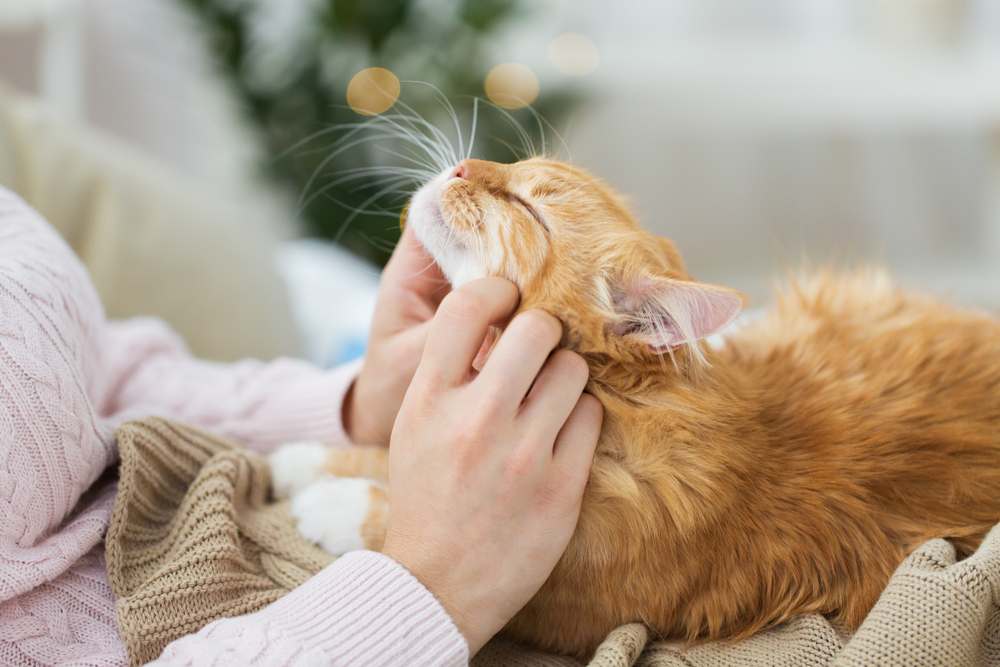
Keep in mind there is no correct timeline for grieving a lost pet, and welcoming a new one home. You may choose to never have a new pet, which is completely fine. Or, you may empty out your local shelter the next day. Nothing can ever replace your lost pet, but there is always more room to love another one.
No matter how you choose to grieve and recover from your pet’s loss, the Pearland Animal Cancer and Referral Center team is here for you. Give us a call if you have any questions about welcoming a new pet into your life. And, when you do, we would love to meet her.
